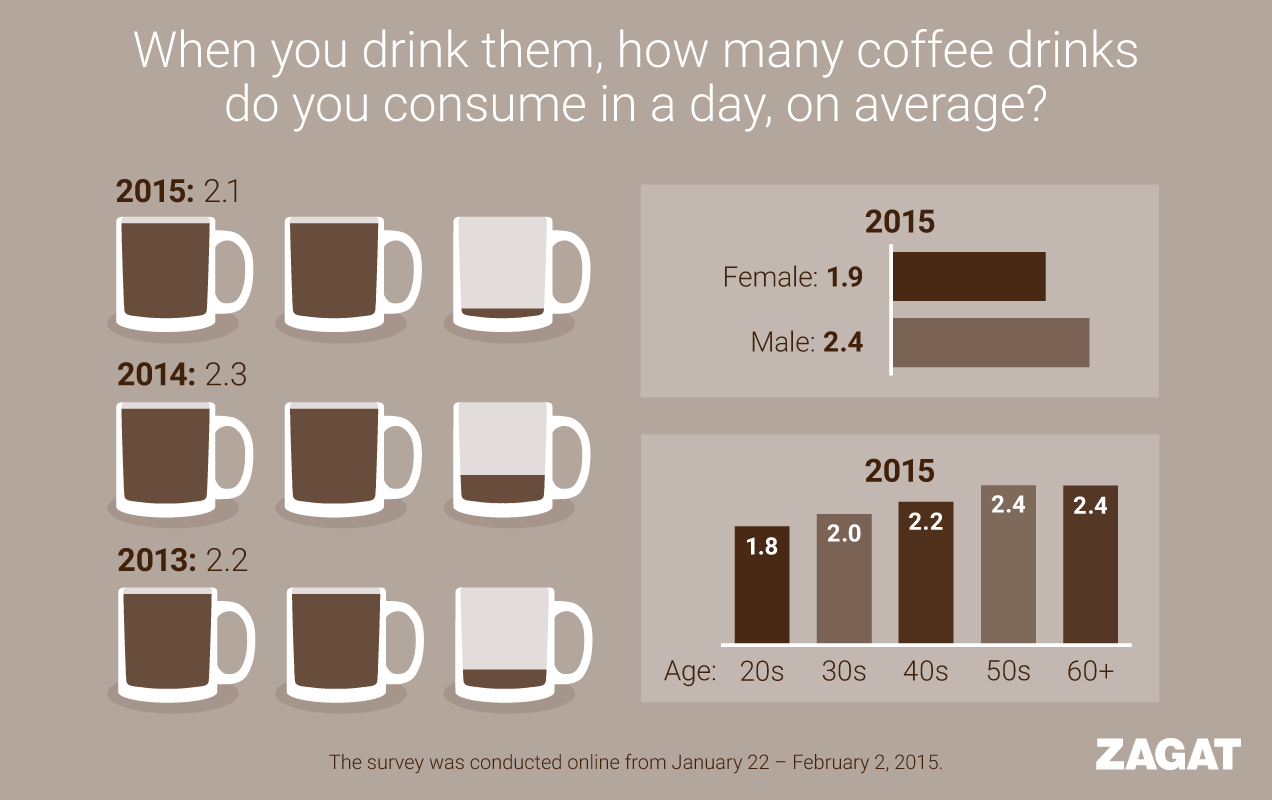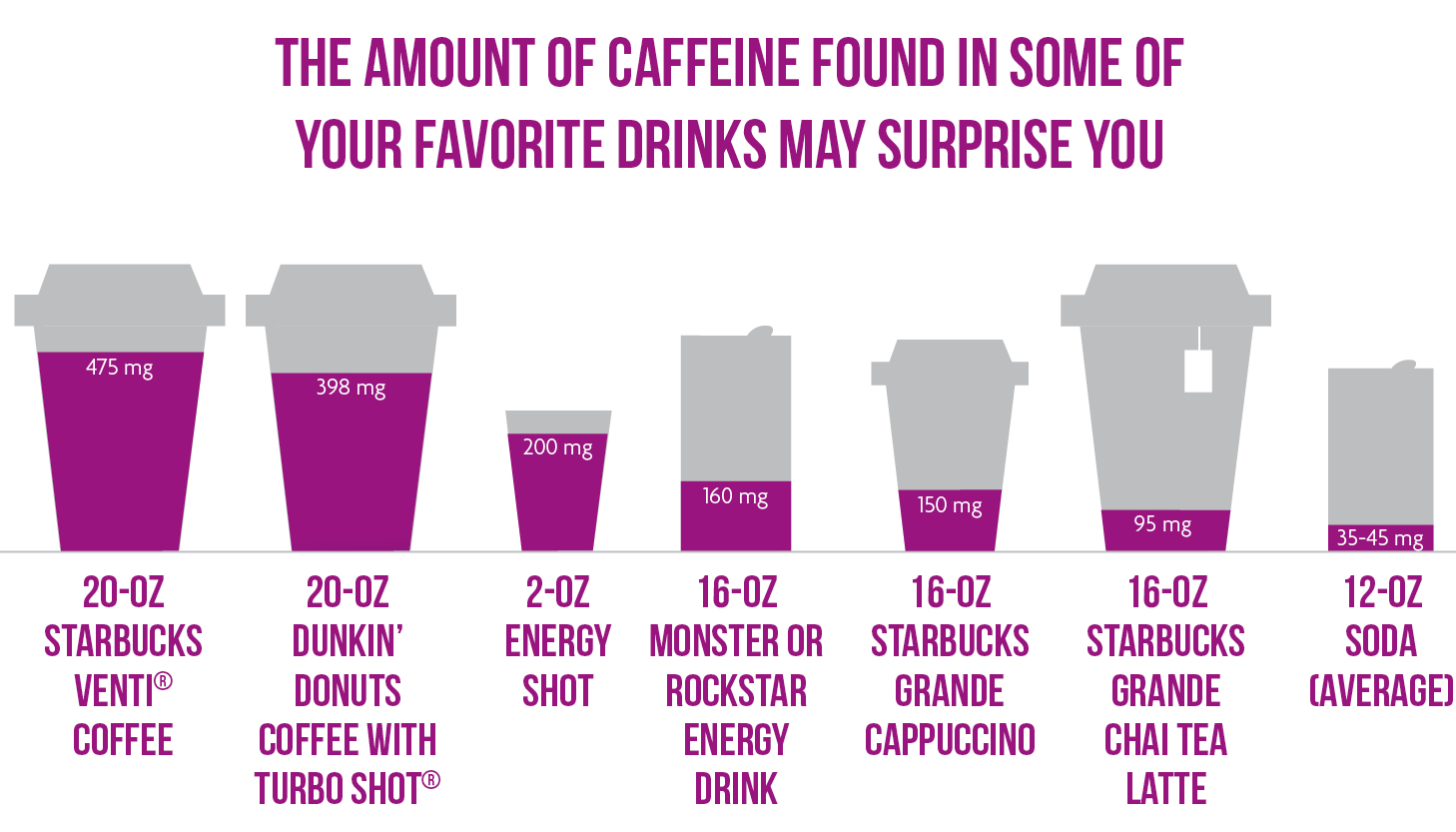

Drip coffee-making methods, or those made using a filter, have around 145 milligrams per 8-ounce cup.

Coffee made using a French press has some of the lowest levels of caffeine, averaging about 108 milligrams of caffeine per 8-ounce cup.Here’s a quick guide to the caffeine levels of common coffee brewing methods:
Average amount of caffeine in coffee how to#
When you know how to brew coffee beans correctly, you can adjust the amount to what you might need on any particular day. While the basic levels of caffeine in coffee beans are quite consistent, the brewing method you choose does affect the caffeine level in the final cup. The darker roasted coffee beans may make coffee with a stronger flavor, but that has nothing to do with the amount of caffeine that ends up in the brew. Both light and dark roast coffee beans generally have the same amount of caffeine. This is actually an incorrect assumption. Specifically, it is thought that darker roast coffee beans have more caffeine than lighter roasts. Some people believe that the roasting style of the coffee bean also affects the caffeine level. Most coffee connoisseurs find Robusta much less pleasant to drink than Arabica. However, this type of coffee is significantly more bitter with a much less complex flavor. If you want more caffeine, you may be tempted to opt for Robusta coffee. For example, Arabica coffee has about 12 milligrams of coffee per gram, while Robusta coffee has about 22 milligrams per gram. In a single coffee bean, there are about 6 milligrams of caffeine however, the exact measurement depends on the variety used in the coffee. Meanwhile, those that take longer, such as a drip coffee maker, require a coarser grind. Coffee bean brewing methods that work quickly (like when you make a cup of espresso) need a finer grind. The final product may be coarsely ground or finely ground, depending on what coffee brewing methods the brewer plans to use. Next, the coffee is ground in a coffee bean grinder. For example, longer, hotter roasting will generate a more intense taste and aroma in the coffee beans. Roasting greatly affects the beans’ flavor. After the roasting process, the green coffee beans are considered whole bean coffee. When coffee fruits are harvested and cleaned, farmers separate the fruit from the coffee seeds, which are later roasted. Coffee beans are found within the fruit, typically in pairs. The plant yields fruits that mature over the course of nine months. There are two major coffee bean types, Coffea arabica, also known as Arabica coffee, and Coffea canephora, also called Robusta coffee. This plant grows in tropical areas as a large evergreen shrub. The coffee bean plant is what provides all of the joy coffee brings to the world. Coffee has become integral to morning routines because its natural caffeine provides a jolt of energy and alertness that helps people wake up.īut how much caffeine does each bean offer? We’re taking a closer look below. Many can’t even conceive of the idea of starting the day without a flavorful cup of Joe. Hot and soothing, with a fragrance that brings comfort and joy, coffee is an essential part of the day for people all over the world.


 0 kommentar(er)
0 kommentar(er)
